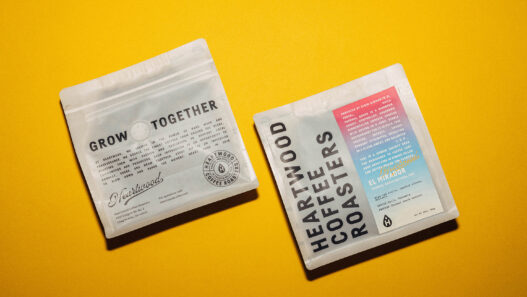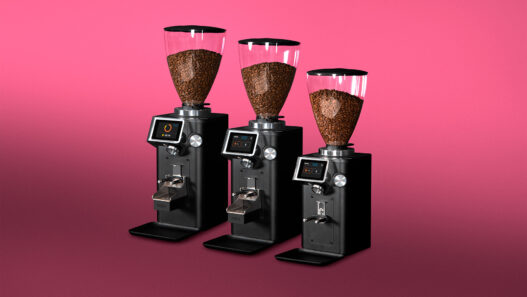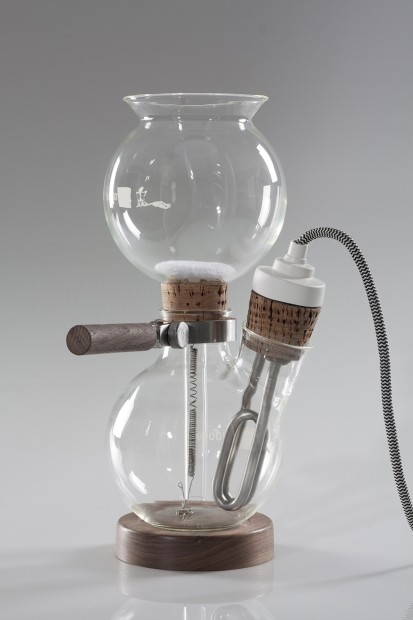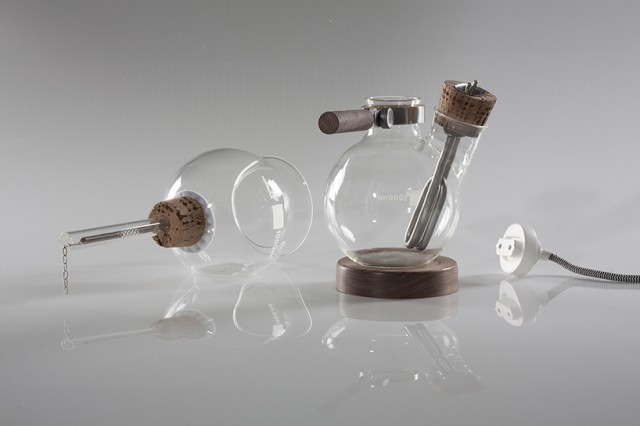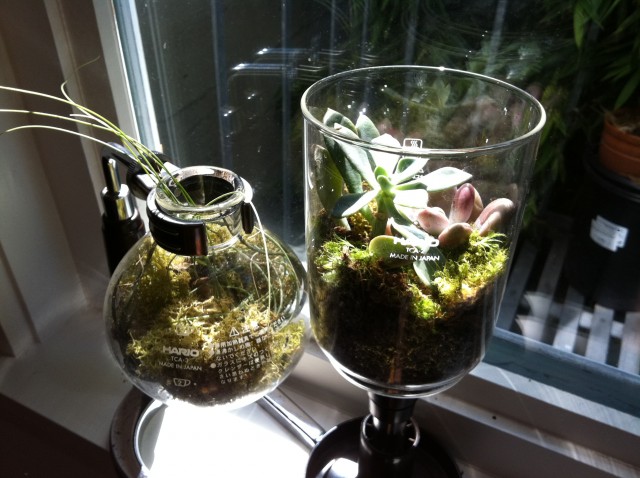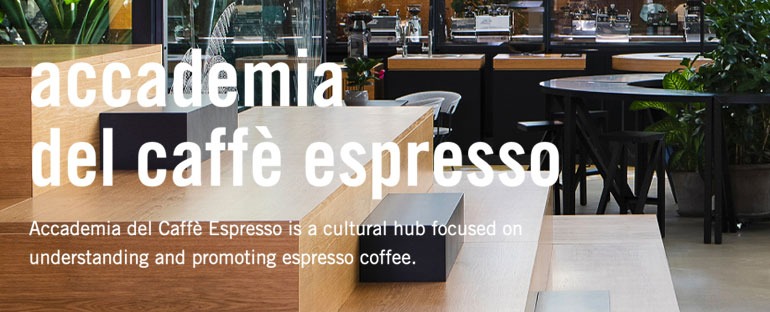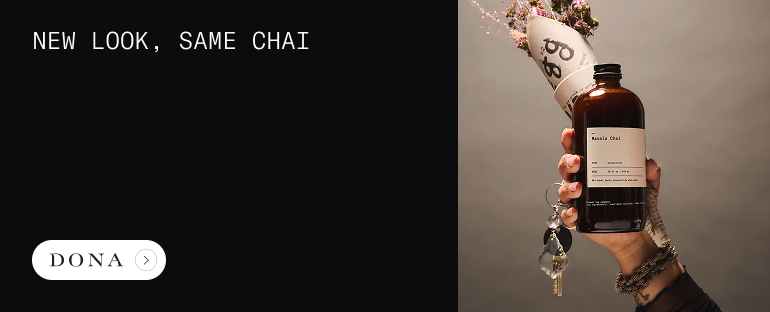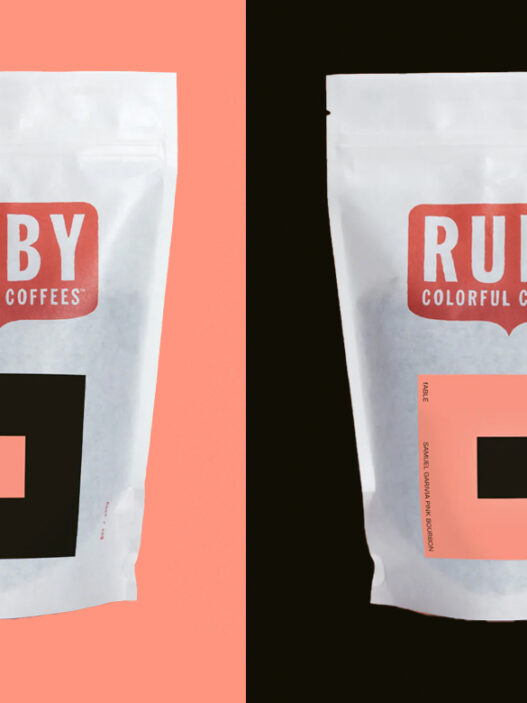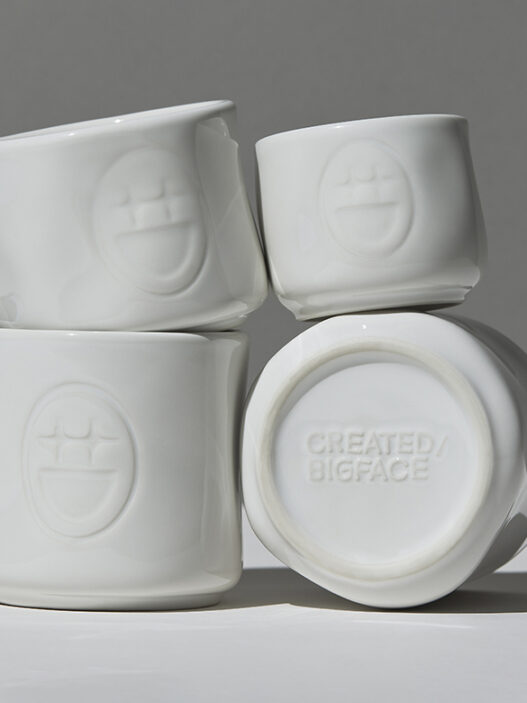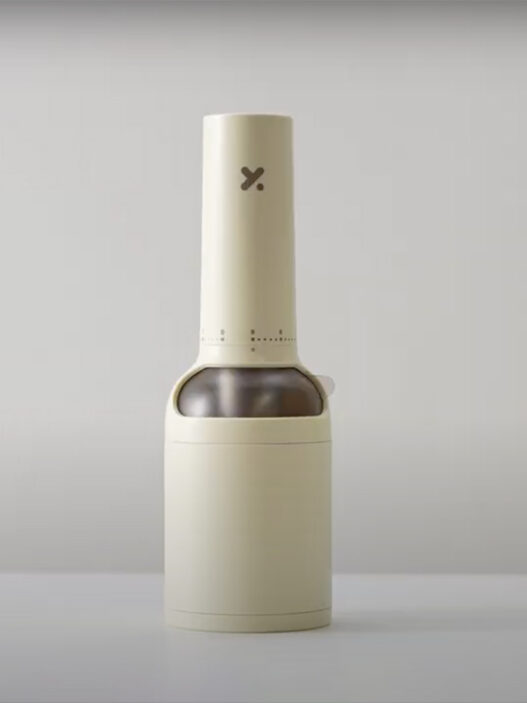Now here’s a modern take on an old classic. Take a look at Portugal-based designer David Meteus’ concept for a syphon pot fueled by an immersion heater. The cloth cord, the cork, and the hand-crafted look of this brewer is glorious.
For the unacquainted, a vacuum coffee maker (siphon, syphon, or vac-pot) has been around since the 1830s. The user places ground coffee in the chamber above while water is heated in the chamber below. Pressure pushes the hot water to the top chamber and the ground coffee is brewed until the heat source below is extinguished/turned off. The brewed coffee drops down through a filter (usually cloth) and the bottom vessel becomes a server.
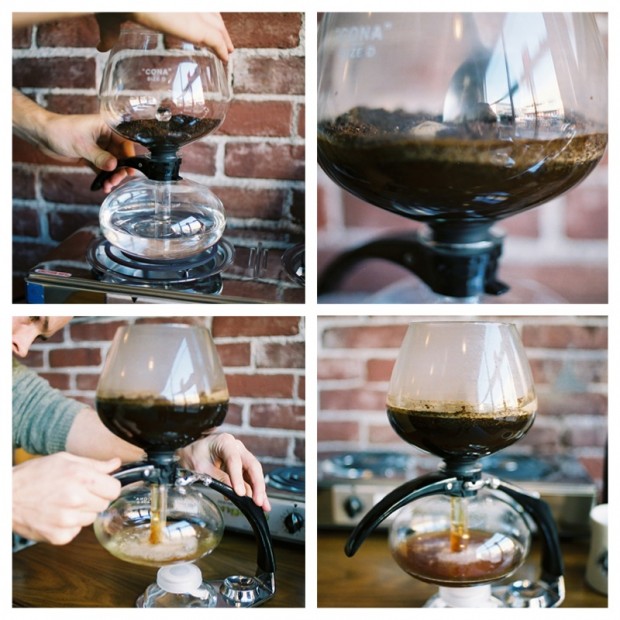
Coffee made this way can be very tasty but it’s a tricky brew (heat and contact time vary wildly). The device had a resurgence of popularity among the boutique coffee crowd in the early 21st century and is used extensively in the world of barista competitions (usually to steep things that aren’t coffee – like dried blueberries and coffee cherries). During the oughts some cafes went as far as building out vac-pot bars with expensive halogen beam-heaters. Nowadays, you’re more likely to see vac-pots used as terrariums:
That is, perhaps, until this concept Cafe Balao syphon, with its aesthetics that’ve caught up to modern-day cafes, hits production.
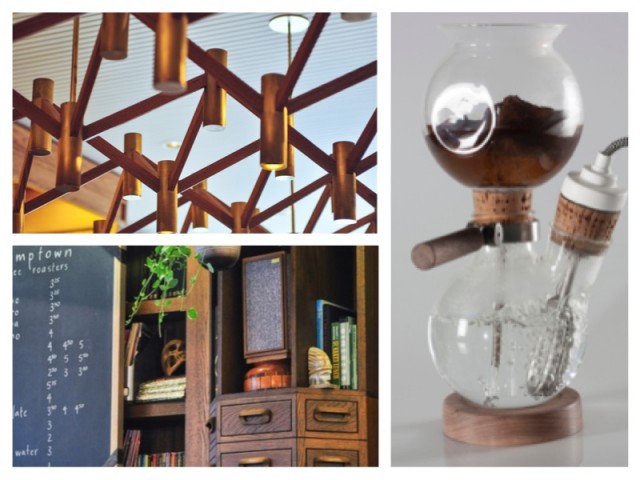
Via DesignBoom








